Is THIS where aliens are hiding? NASA’s Europa Clipper will launch on 1.8-BILLION-mile journey to Jupiter’s icy moon today in search of life
Europa, Jupiter’s fourth-largest moon, is being hailed as one of the most likely locations for aliens in our solar system.
Now NASA may have a chance to find out, as the ambitious Europa Clipper mission takes off on an ambitious five-and-a-half-year research voyage.
After a delay caused by Hurricane Milton, Clipper will launch from NASA’s Kennedy Space Center Florida at 12:06 ET (17:06 BST) today.
After traveling approximately 1.7 billion miles, the $5.2 billion (£4 billion) spacecraft will finally orbit Jupiter in April 2030.
During more than 40 flybys, Clipper will conduct a detailed survey of Europa to determine whether the icy world could have “conditions suitable for life.”
Beyond Earth, Jupiter’s moon Europa is considered one of the solar system’s most promising potentially habitable environments. Clipper will orbit Jupiter in 2030 to explore Europa, the fourth largest of Jupiter’s 95 moons
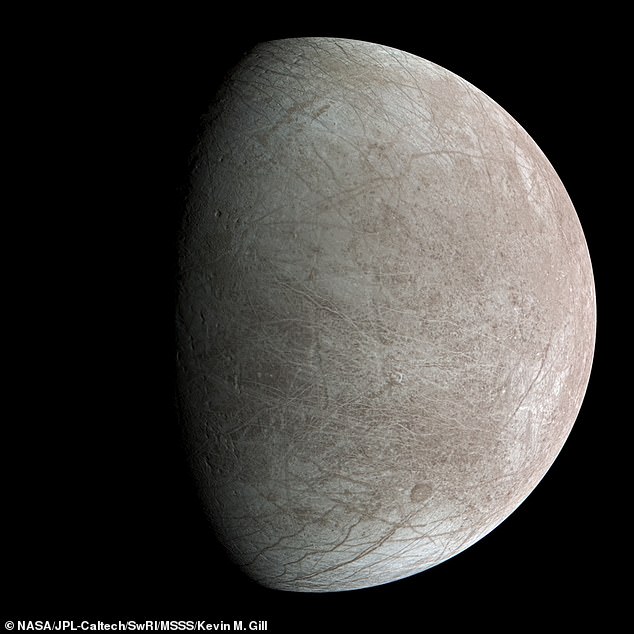
Europa consists of an icy shell, estimated to be about 15 miles thick, and a very thin atmosphere. It is shown here as imaged by the Juno spacecraft, September 2022
Slightly smaller than Earth’s moon, Jupiter’s moon Europa is considered one of the solar system’s most promising potentially habitable environments.
Together with Earth and Saturn’s moon Enceladus, Europa is one of the few locations in our solar system with liquid water.
Live coverage of today’s launch will be broadcast NASA+ And NASA’s YouTube channel.
“There is very strong evidence that the ingredients for life are there in Europa, but we have to go there to find out,” said Dr. Bonnie Buratti of NASA’s Jet Propulsion Laboratory, the mission’s deputy project scientist.
Dr. Buratti said exploration missions like this always reveal something “we couldn’t have imagined.”
“There will be something there – the unknown – that will be so amazing that we can’t imagine it right now,” she said.
“That’s what excites me most.”
Europa, one of Jupiter’s 95 known moons, is encased in an ice sheet estimated to be 9 to 15 miles thick.
Scientists think this outer frozen crust hides a liquid saltwater ocean that could be 75 miles or more deep.
The European ocean could hold about twice as much water as Earth’s global ocean, scientists think – and could potentially harbor life.
The Clipper is the largest spacecraft NASA has ever built for a planetary mission, measuring approximately 100 feet (30.5 meters) with solar panels deployed – larger than a basketball court.
Clipper’s massive solar panels will collect sunlight to power scientific instruments, electronics and other systems – about 500 million miles from the sun, where sunlight is weaker than on Earth.
Clipper’s main mission objectives are to produce high-resolution images of the European surface, determine its composition and search for signs of recent or ongoing geological activity.
The mission will also measure the thickness of the moon’s icy shell, search for underground lakes and determine the depth and salinity of the European ocean.
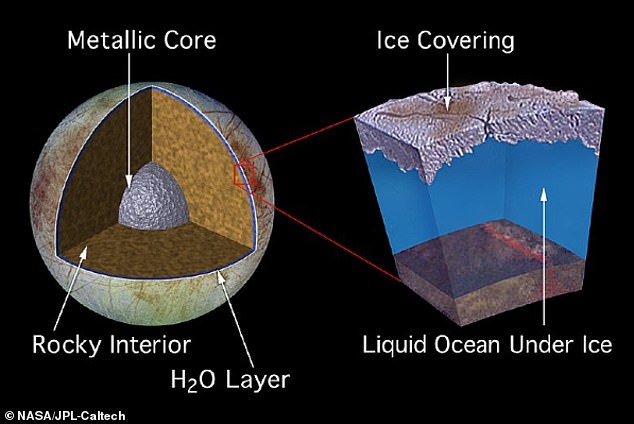
Scientists are almost certain that beneath Europa’s icy surface lies a saltwater ocean with about twice as much water as Earth’s global ocean. Image shows a possible model of Europe
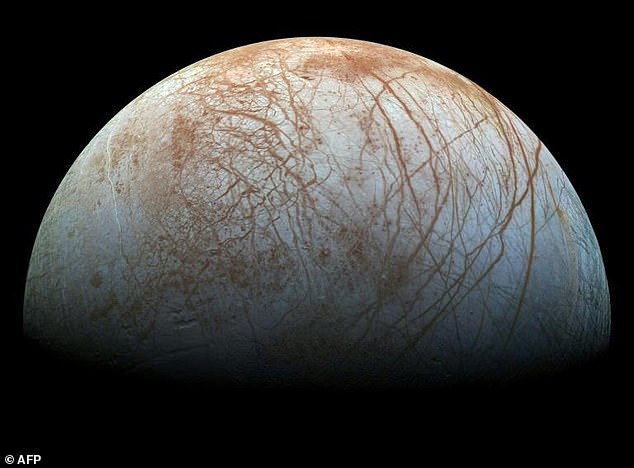
The mission aims to find out whether Europa (photo) contains the ingredients that make it possible for life to be present
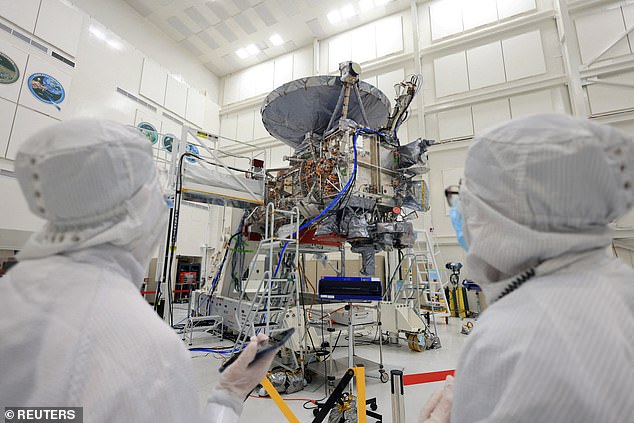
Clipper is the size of an SUV with solar panels long enough to span a basketball court. It is seen here being built and tested at the Jet Propulsion Laboratory during a media tour in Pasadena, California, April 11, 2024
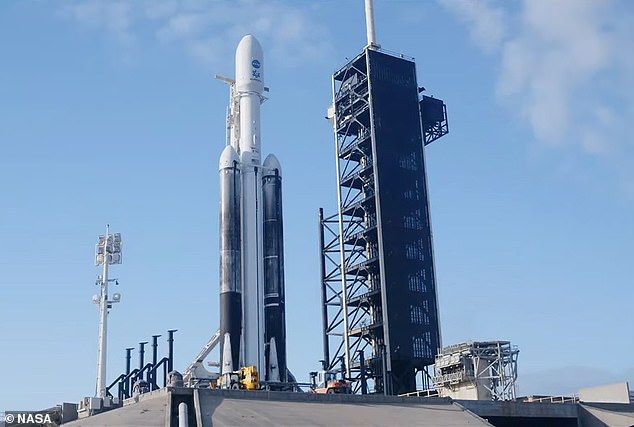
Elon Musk’s firm SpaceX will launch its Falcon Heavy rocket with Europa Clipper from LC-39A, Kennedy Space Center, Florida. Pictured prior to the launch on Sunday, October 13
In this animation, Clipper (pink) departs from Earth (blue). It starts early next year along Mars (brown) and at the end of 2026 along Earth. Finally, after a journey of about 3.5 billion kilometers, Europa Clipper will enter orbit around Jupiter in April 2030 (green).
Dr. Buratti notes that there are three main requirements for the formation of life in our solar system: liquid water, certain chemistry (i.e. organic compounds that can serve as food for all primitive organisms) and an energy source.
In the case of Europe, an energy source could be thermal vents on the ocean floor.
Experts believe there could be microbes deep within this potentially nutrient-rich liquid ocean, which could be a lot warmer than the outer shell thanks to thermal vents.
Alternatively, the life forms may be adapted to survive in extremely cold temperatures.
These life forms can be very small, such as ‘extremophile’ microbes that are invisible to the naked human eye.
A hugely promising finding from the James Webb Space Telescope last year was the presence of carbon dioxide (CO2) on Europa.
The ‘biologically essential’ compound could be produced by life forms, just as humans produce CO2 on Earth.
Last year, scientists discovered that there is less oxygen on Europe’s surface than previously thought, which is crucial for cell functioning.
While it doesn’t completely rule out the possibility of life on Europa, the study says there is “a smaller range supporting habitability” than we realized.
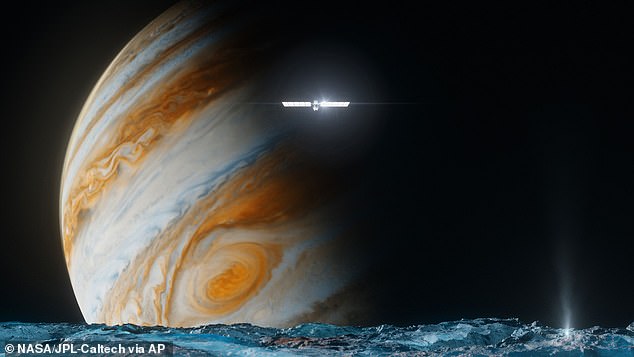
Clipper will not enter orbit around Europa, but will instead orbit Jupiter. This illustration provided by NASA shows the Europa Clipper spacecraft above the surface of the moon Europa, in the foreground, and Jupiter behind it.

The main body of the spacecraft is a massive 10-foot-tall propulsion module designed and built by the Johns Hopkins Applied Physics Laboratory (APL) in Laurel, Maryland.
Dr. Buratti thinks any life on Europa would be primitive, like the bacterial life that originated in Earth’s deep ocean vents.
However, she emphasizes that Clipper will not look directly for signs of life, but will instead determine whether the moon contains the “ingredients” that allow life to be present.
If so, another mission would have to make the journey to try to detect it – perhaps by drilling through the icy shell.
“We won’t know from this mission because we can’t look that deep,” Dr. Buratti said.
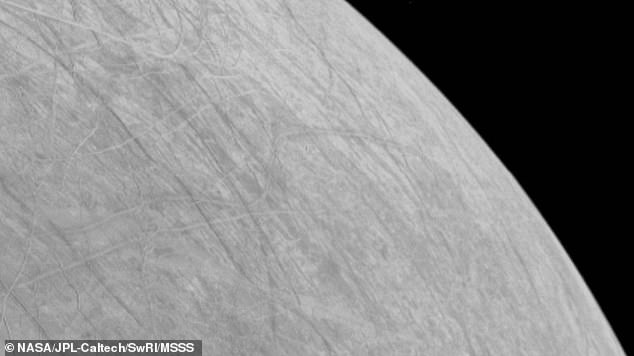
This view of the complex, ice-covered surface of Jupiter’s moon Europa came from NASA’s Juno mission during a brief flyby on September 29, 2022
When Clipper completes its journey in five years, Clipper will not enter orbit around Europa, but will instead orbit Jupiter.
While orbiting Jupiter, it will fly past Europa 44 times during its 3.5-year mission, each at altitudes ranging from 25 to 2,700 km.
In September 2022, another NASA probe called Juno within 220 miles of the moon’s frozen surface.
But Clipper will sneak within 16 miles of Europe’s surface – closer than any other spacecraft.
When work is completed in 2034, the mission will end with a planned crash into Ganymede – Jupiter, the solar system’s largest moon.
